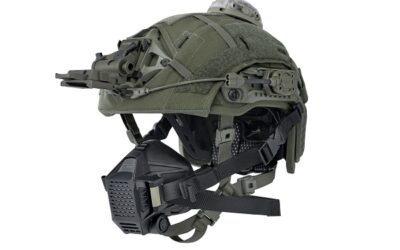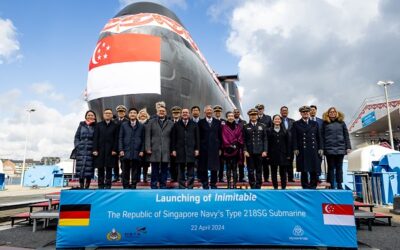World’s First Low-Cost Supersonic Training Missile
As threats from supersonic and hypersonic missiles proliferate throughout the Pacific, a small Melbourne-based company has developed the world’s first low-cost, supersonic training missile, a 31 October statement claims.
EVADER’s innovative, supersonic ramjet engine, with its rugged airframe and autonomous control system, are entirely Australian-developed. The system addresses a hitherto untapped global market for high-speed airborne training targets. The developer, Grollo Aerospace, submitted a proposal for A$2.85 million (€1.71 million) in Defence Innovation Hub support in July and expects to hear more on this front before year end.
“Sailors currently don’t have a representative target they can practice on,” commented Mark Grollo, founder, Chief Technology Officer and designer of the low-cost ramjet engine. “All ships are vulnerable to high-speed, sea-skimming missiles, and these are proliferating: they’re getting faster and more agile, and there are more of them.”
The Royal Australian Navy (RAN) currently uses manned and unmanned aircraft to simulate missile attacks. These suffer from the drawbacks of slow speed, unrealistic trajectories (for safety reasons) and large radar cross-sections, making countering them an unrepresentative training experience. Air-launched from beyond the target vessel’s horizon, the 4.2m, 90kg EVADER can accurately replicate the flight path and trajectory of a genuine, sea-skimming anti-ship missile, and emulate some terminal manoeuvres. Its training value for naval combat system operators in realistically simulating such threats is incalculable.
The development of a unique, high-technology sovereign capability means EVADER could be modified or upgraded to respond to evolving threats without recourse to foreign suppliers, meaning threat intelligence remains under Australian control. In addition, Grollo Aerospace now has an Australian supply chain of 80 companies.
EVADER is the product of seven years of self-funded R&D by Grollo Aerospace and recent cooperation with DST, designed to deliver an operational ADF capability as well as a sustainable commercial outcome. With further development, EVADER will be able to replicate the even higher speeds of attacking missiles, further enhancing its training value to the ADF and allies, as well as enabling the development of new tactics to counter this emerging threat.
At a projected unit cost of A$250,000 (€150,000), EVADER will cost less than one sixteenth of the US$4 million/A$5.7 million for the existing standard US Navy test missile, the Orbital Dynamics GQM-163 COYOTE, according to Grollo. Currently, the RAN can only use the COYOTE at the USN’s test range off Hawaii: neither navy yet has a cheaper system available for routing training, according to former RAAF Air Commander and test pilot Air Vice Marshal (Ret’d) Peter Nicholson, whose technology consulting firm, aadiDefence, is supporting Grollo Aerospace. He adds the Australian Army is also interested in EVADER, having invested heavily through projects such as LAND19 Phase 7B in ground-based radars and missiles for force protection, but is still unable to simulate and train against the growing threat from high-speed cruise and hypersonic missiles.
After seven years’ internally funded investment, Grollo won a A$1.75 million Defence Innovation Hub contract in 2017, which funded a series of trials at Woomera the following year, which validated missile design, the autonomous control system and ramjet and also showed EVADER can be reused 10 times or more.
EVADER’s unique feature is its stainless steel, solid-state ramjet engine, which enables supersonic flight using standard JP1 jet fuel, without requiring a rocket motor or any exotic, expensive alloys in its construction. A second Defence Innovation Hub contract will enable Grollo to confirm the missile’s supersonic performance to the Australian and US navies, as well as proving the integrity of its ‘fail safe’ mode when used to simulate high-speed incoming attacking missiles.
This would take EVADER across what Dr Bill Schofield, aadiDefence CEO and a former Deputy Chief Defence Scientist, describes as the “valley of death” for high-technology projects. “We’ll have reached Technology Readiness Level 7 – demonstrating a prototype of the entire system in an operational environment. That will confirm we’ve got an initial supersonic air target capability that we can offer to the ADF.”
It will also open up an export market among trusted allies, he adds. EVADER is unique and can be air-launched for training purposes into any suitable military sea- or land-based range. The US Navy has expressed a strong interest in EVADER and trusts Australian-developed technology, says Dr Schofield: two of Australia’s biggest defence export earners, the NULKA anti-missile decoy and the vectored-thrust rocket nozzle of the Evolved Sea Sparrow Missile (ESSM) are in fleet-wide USN service.
For a brief video of the engine static trials and flight trials, click here https://www.dropbox.com/s/lihxq8w76rtcw45/GrolloAerospace_EVADER_2018.08.28.mp4
























